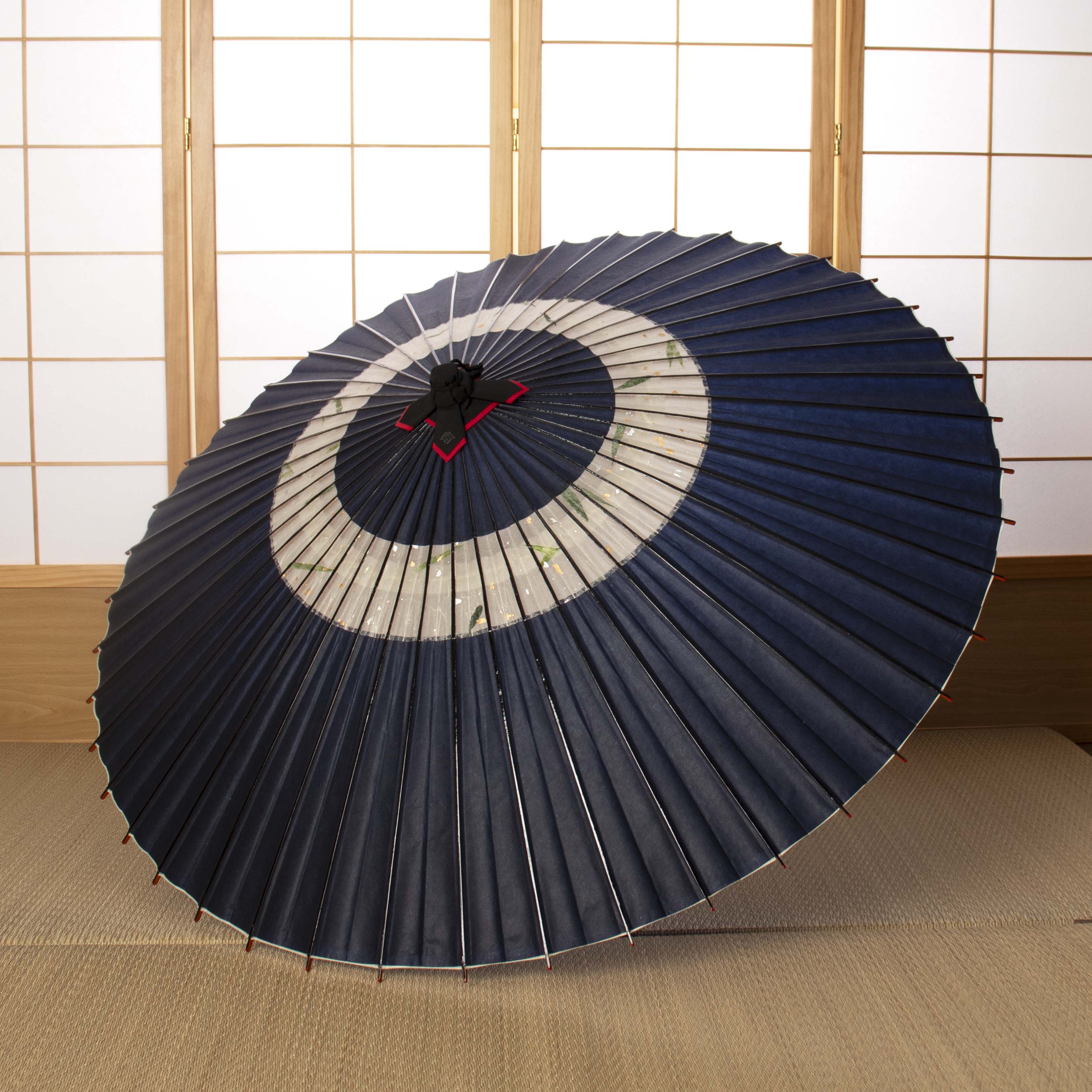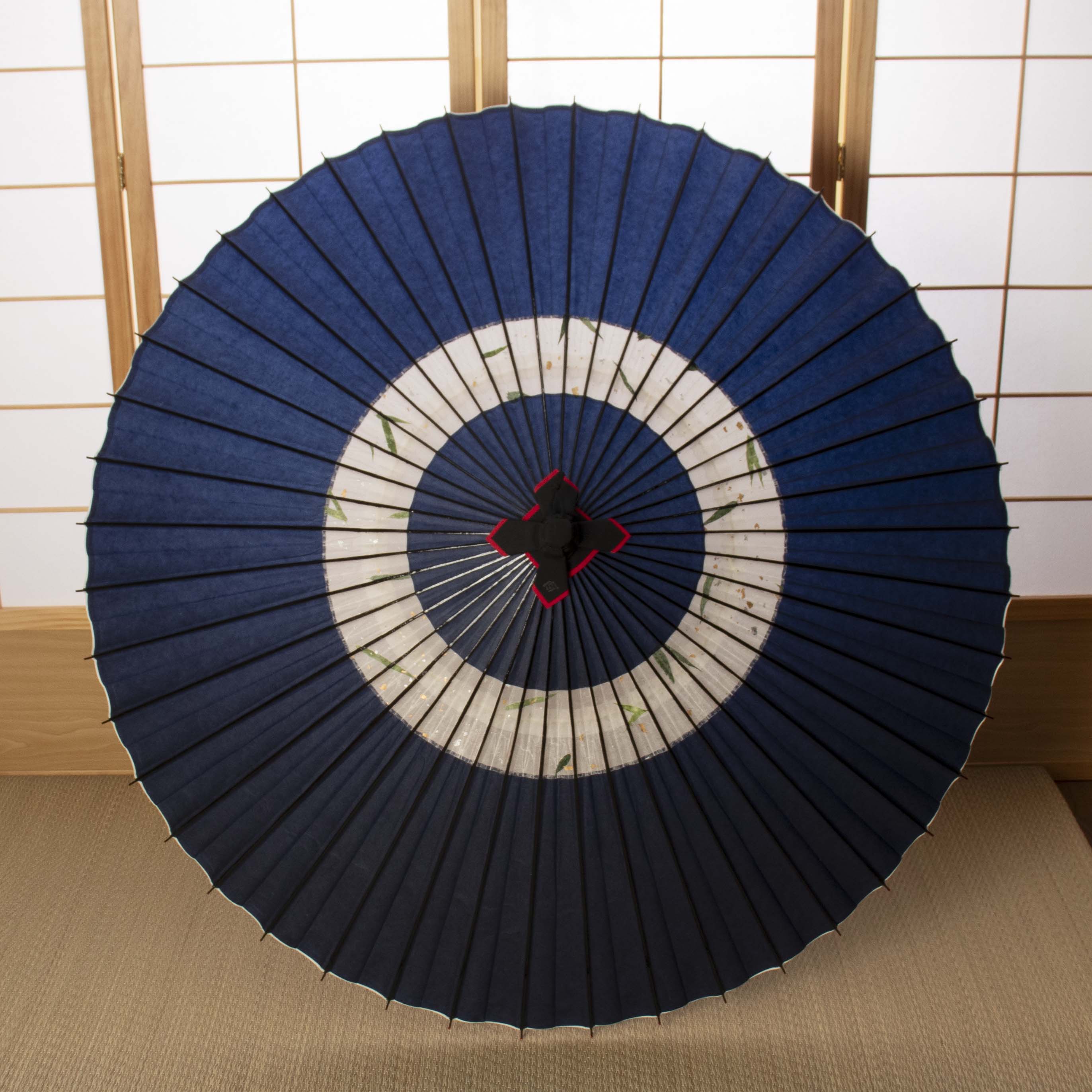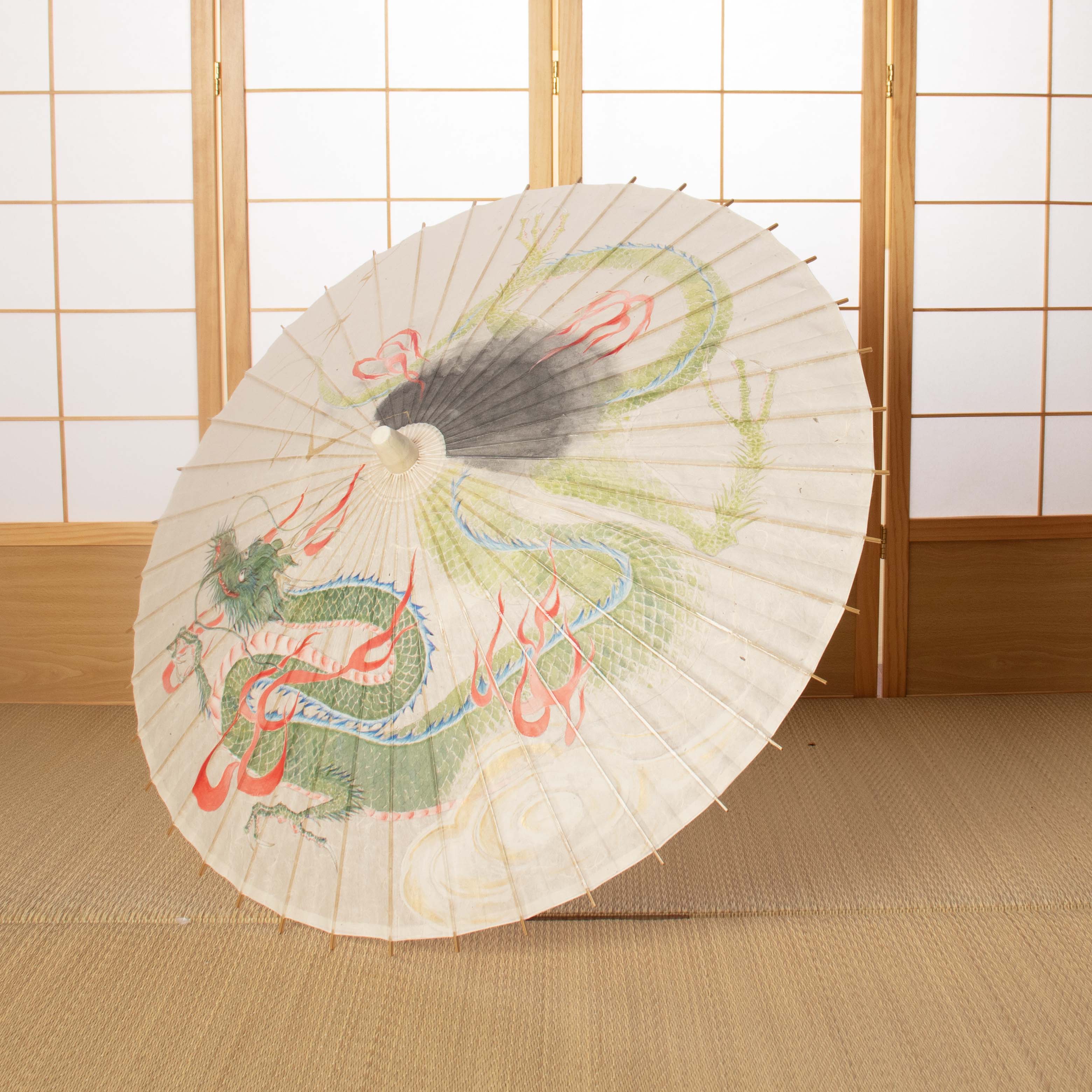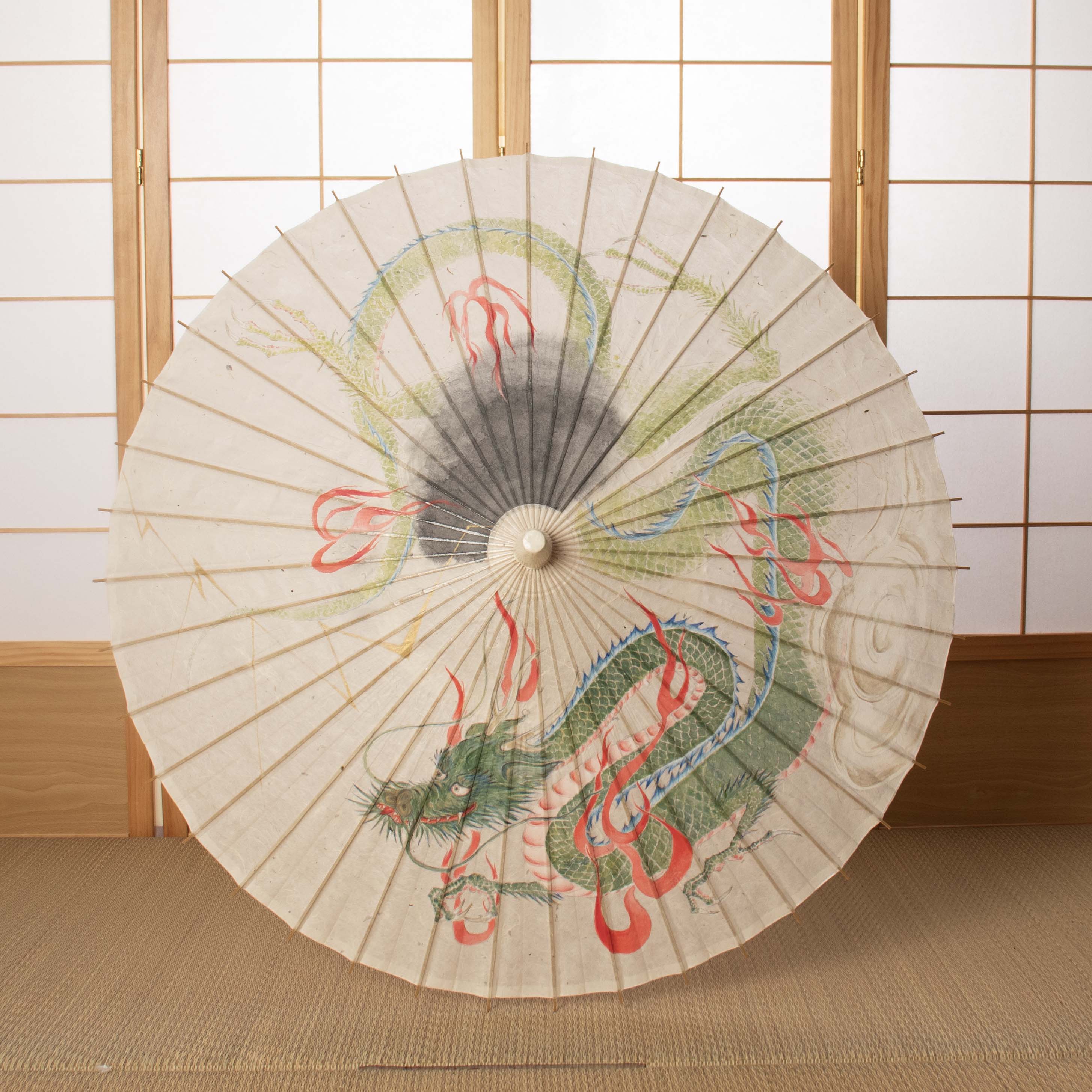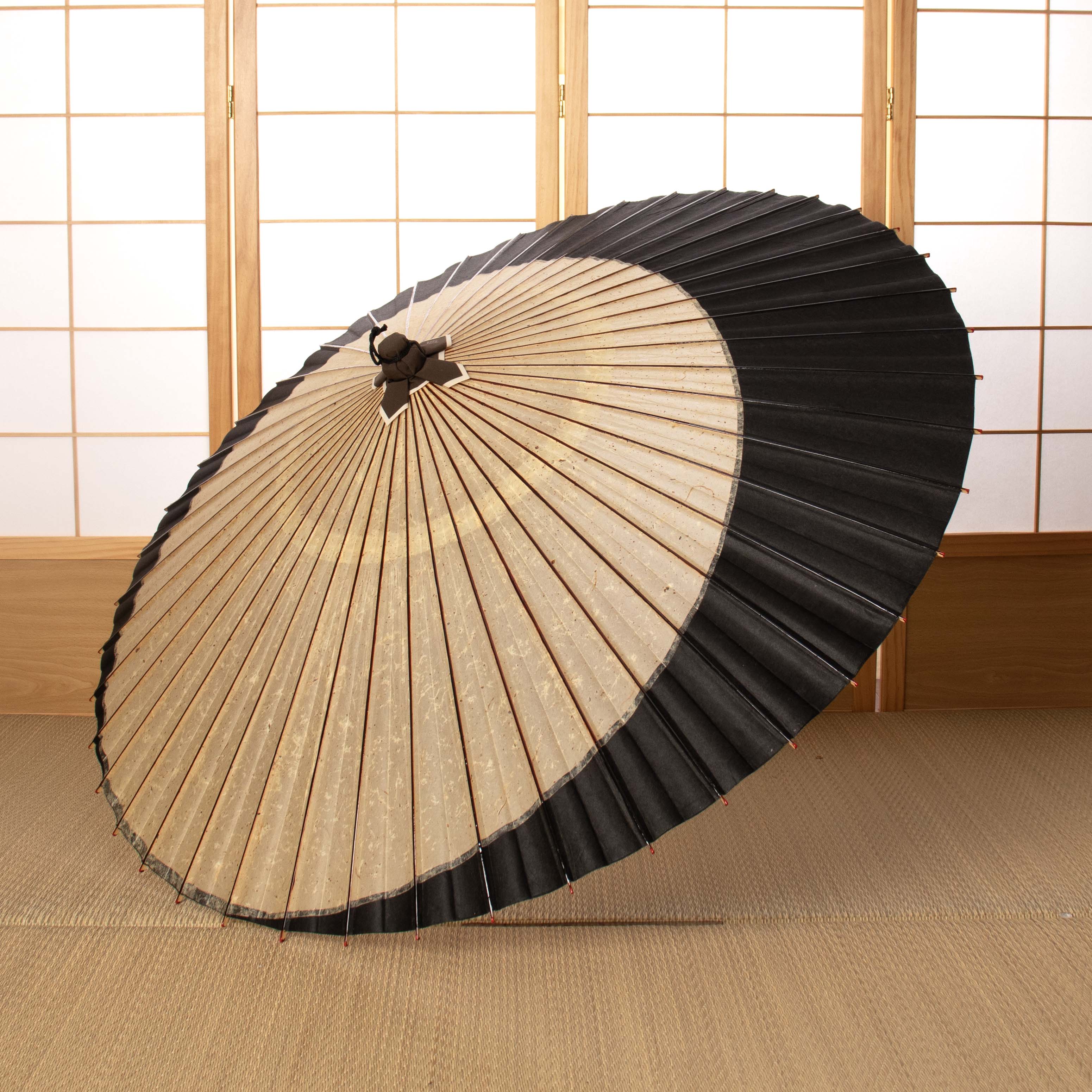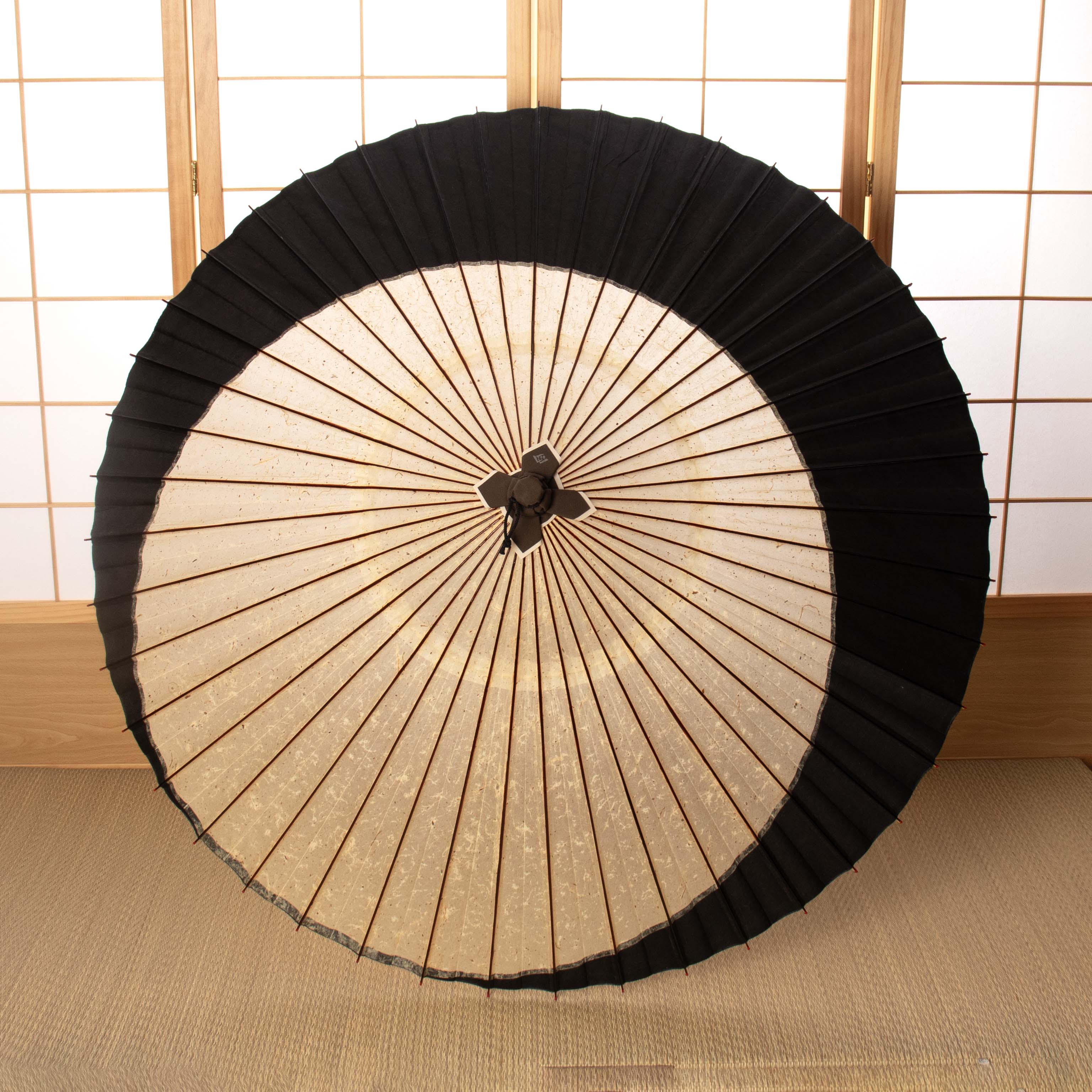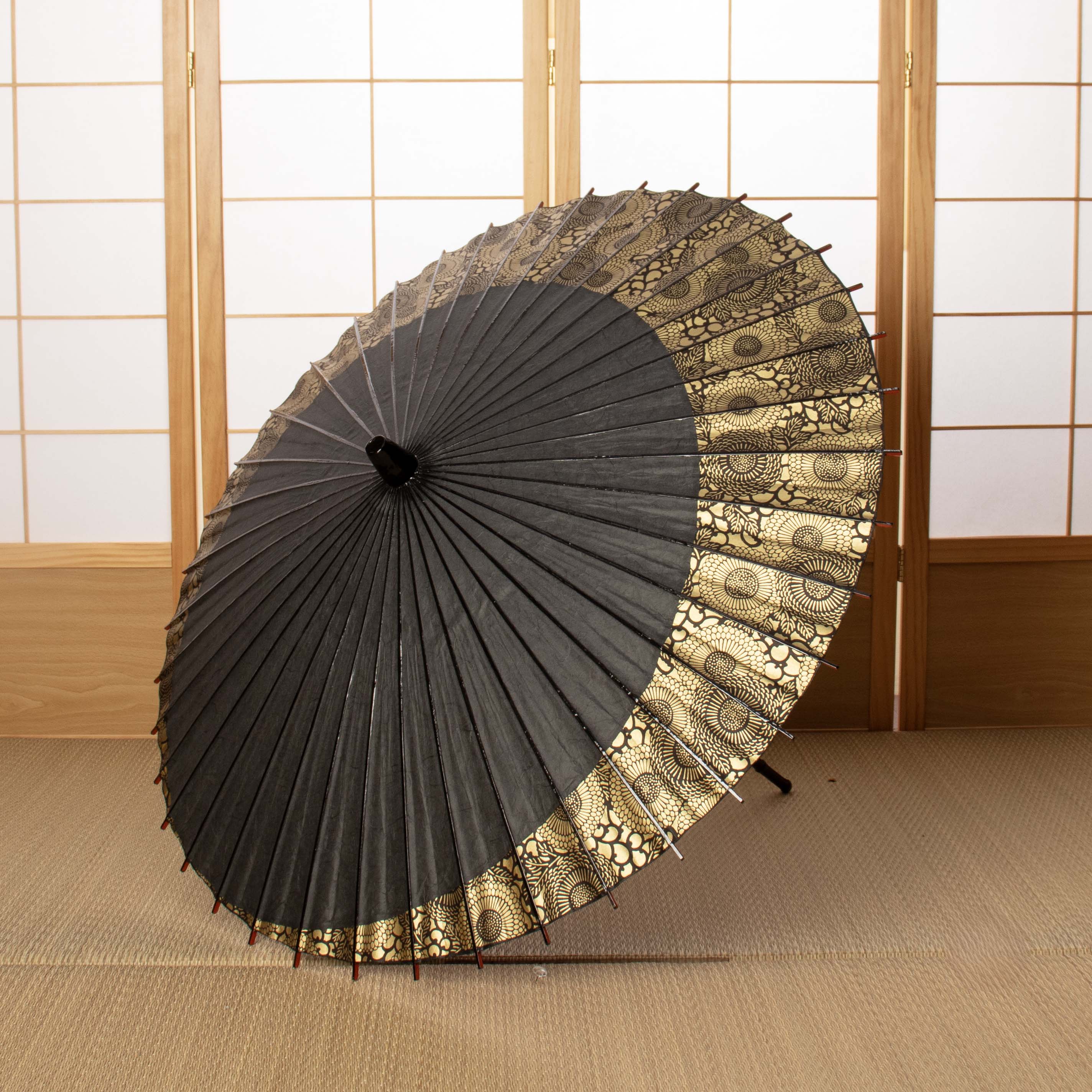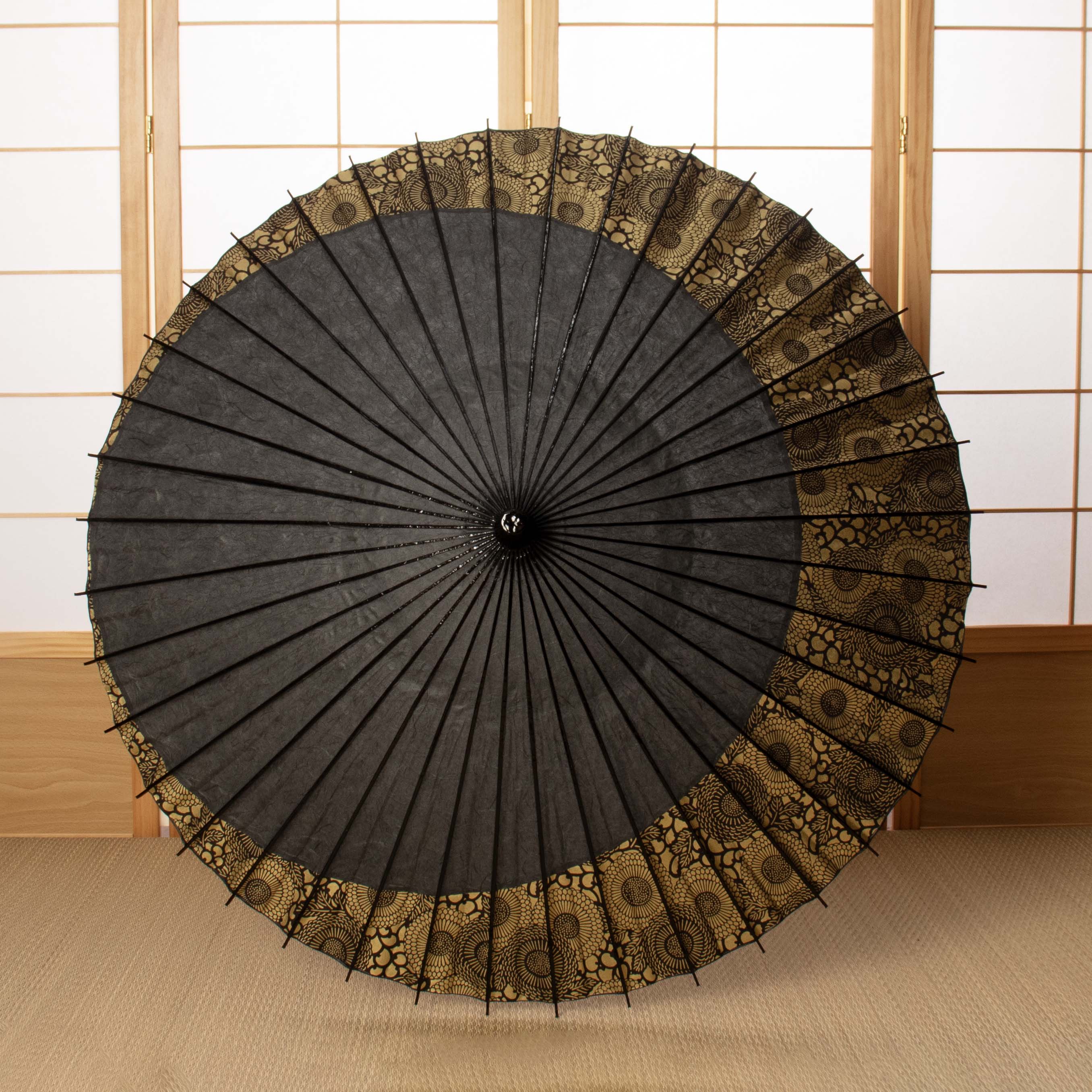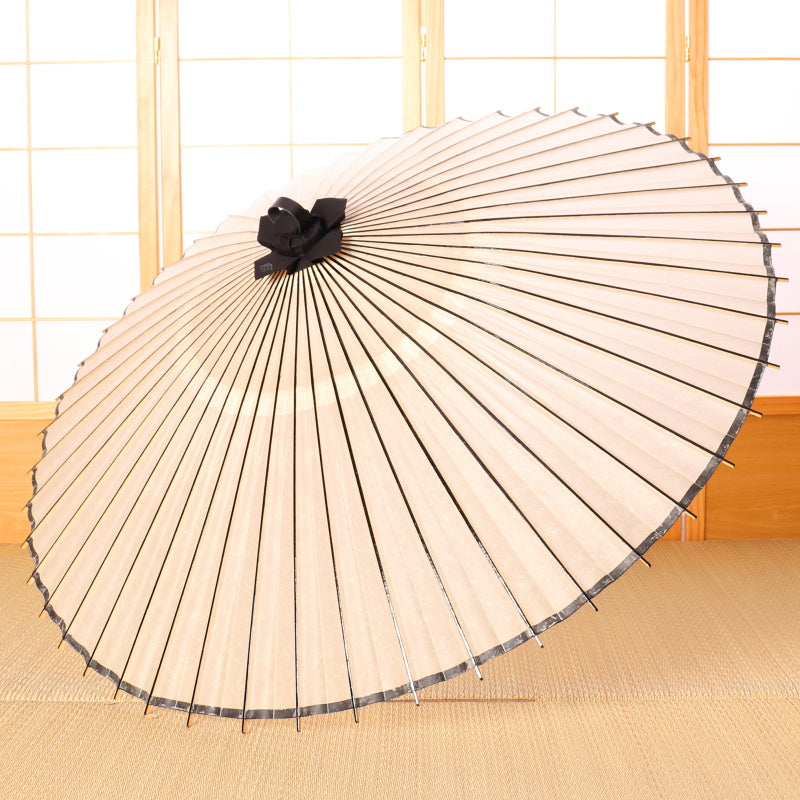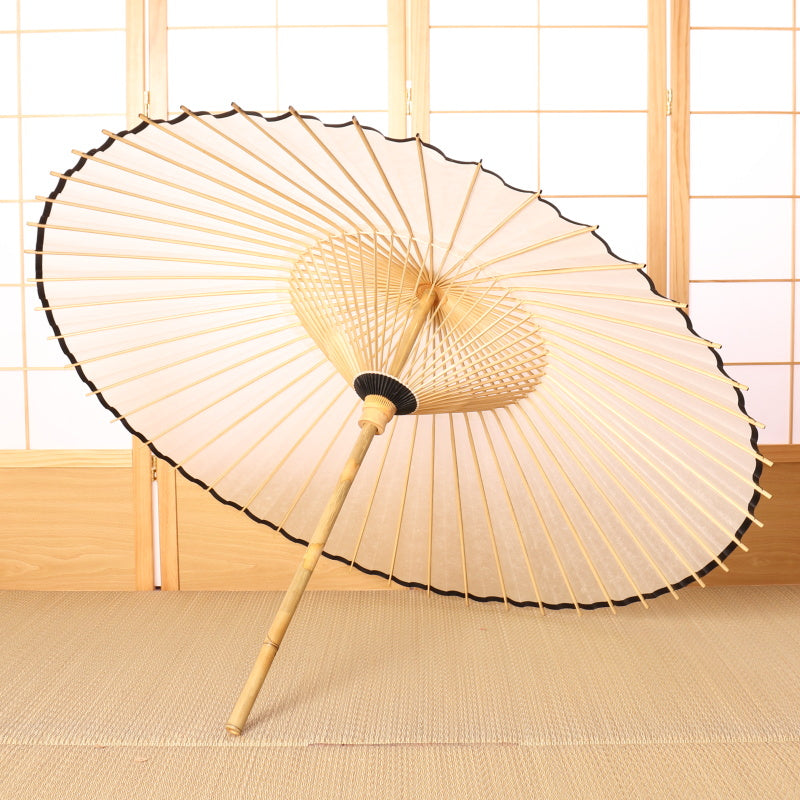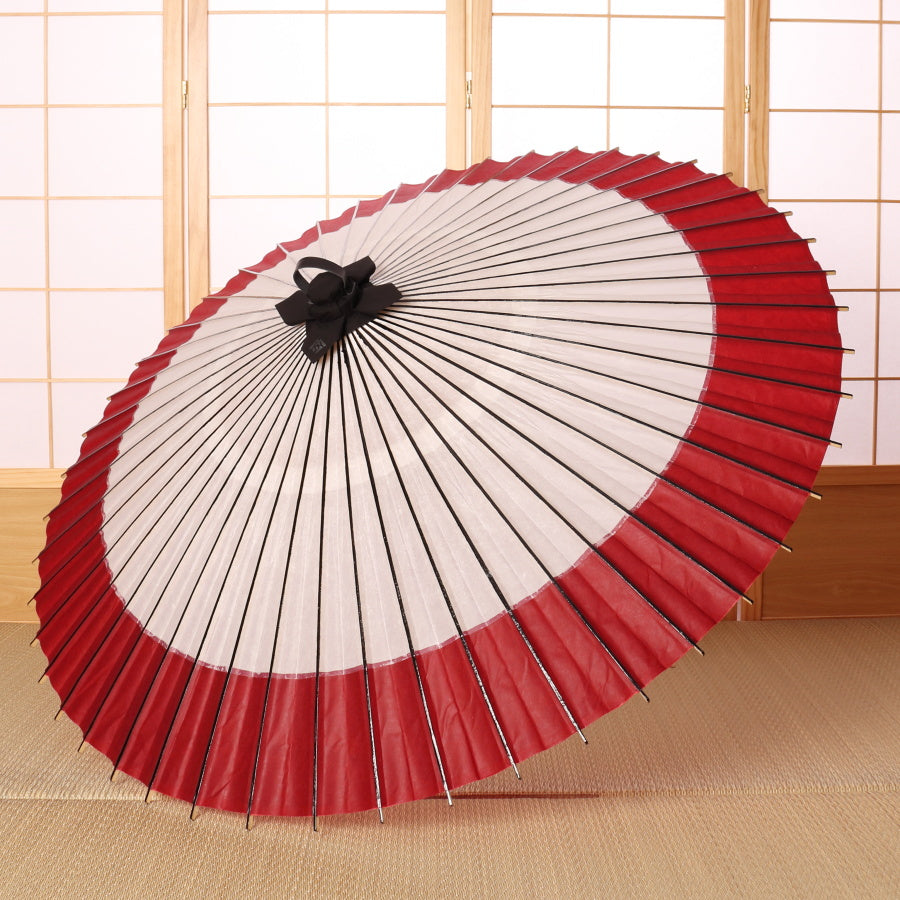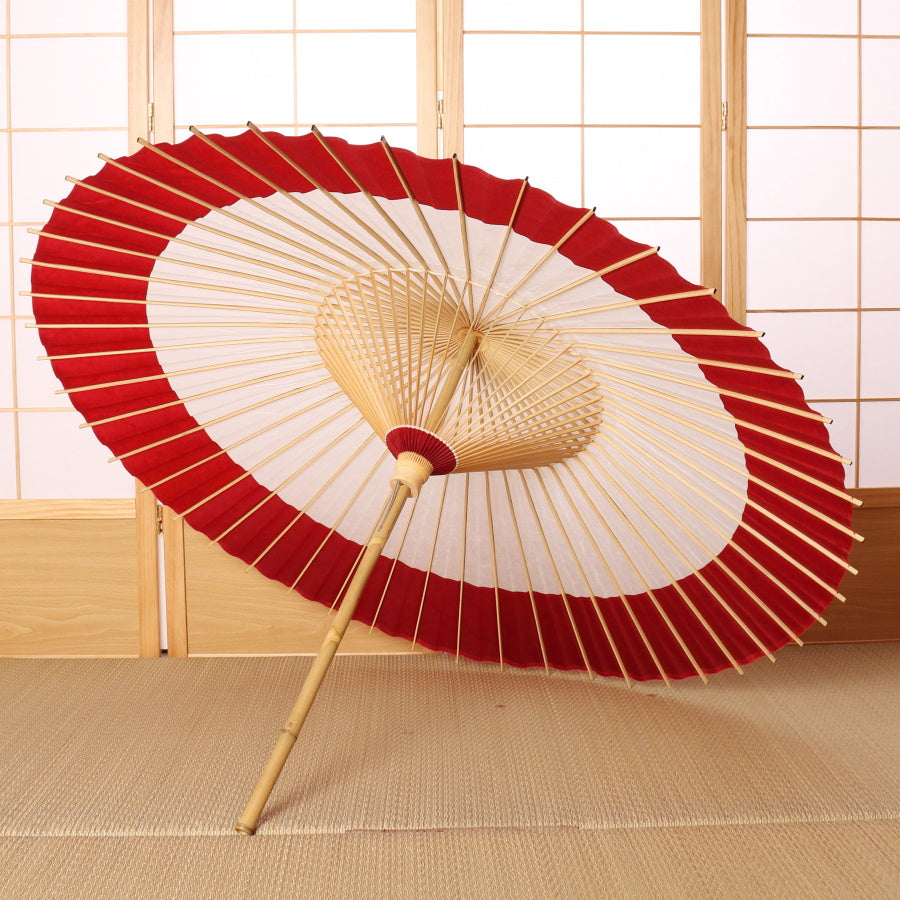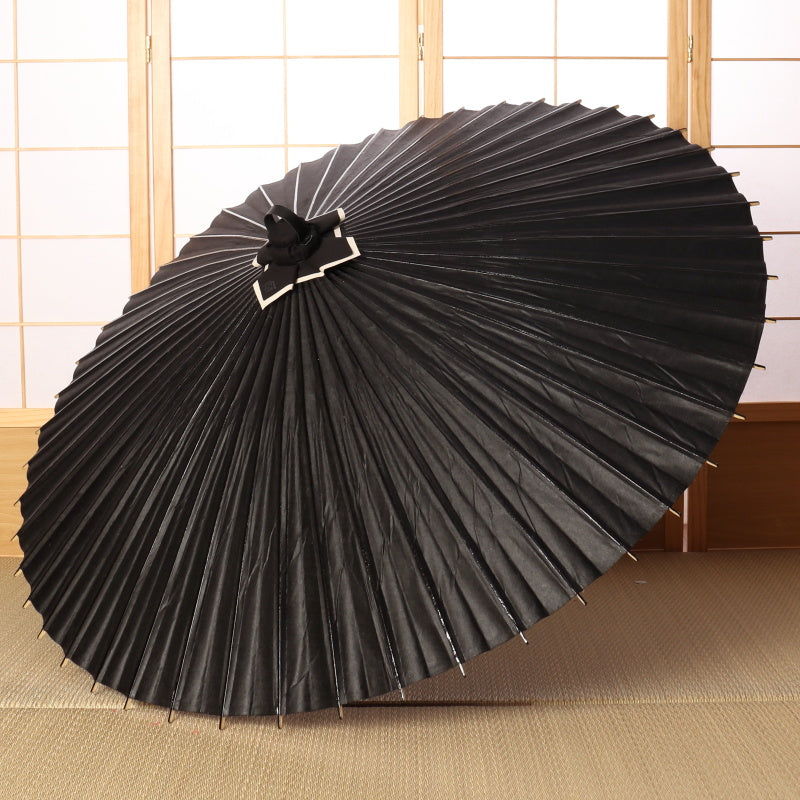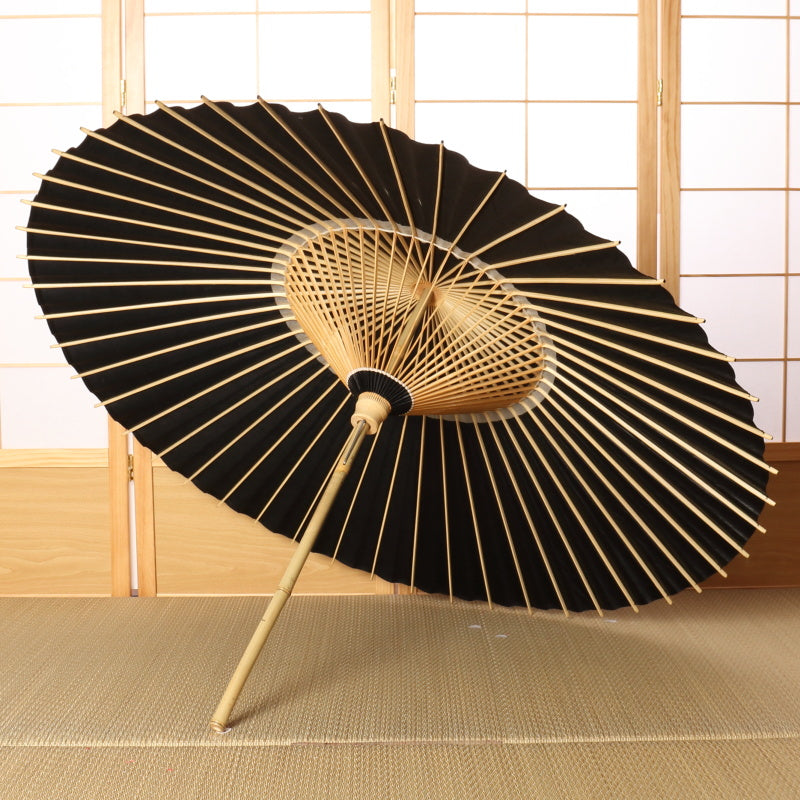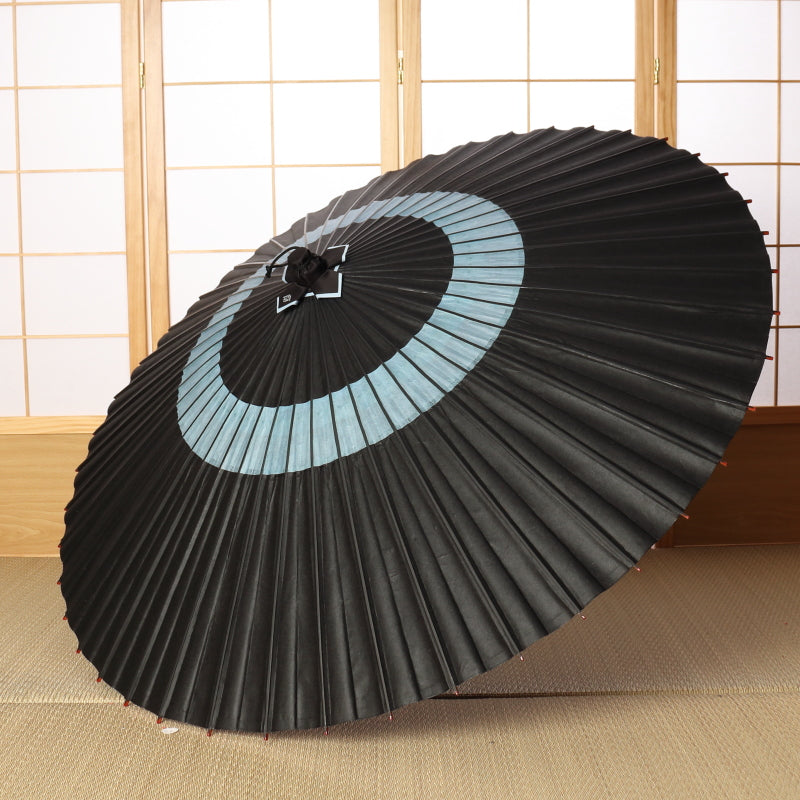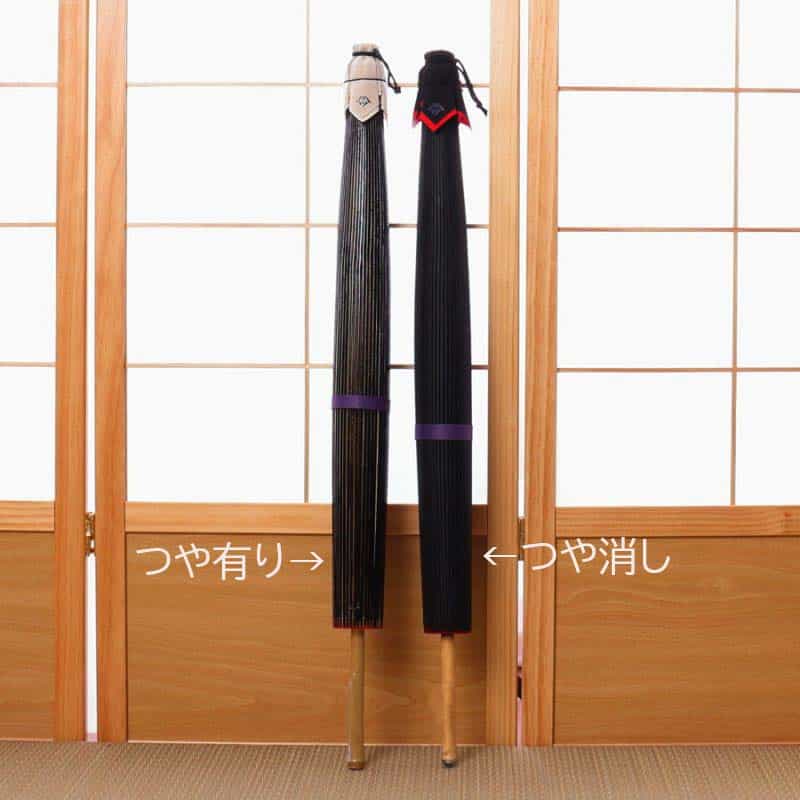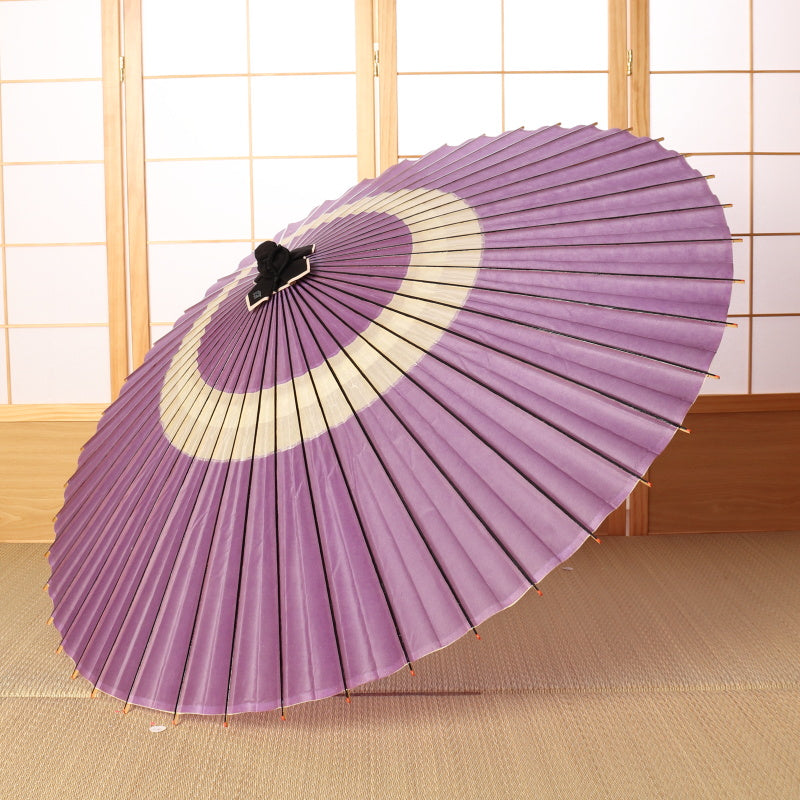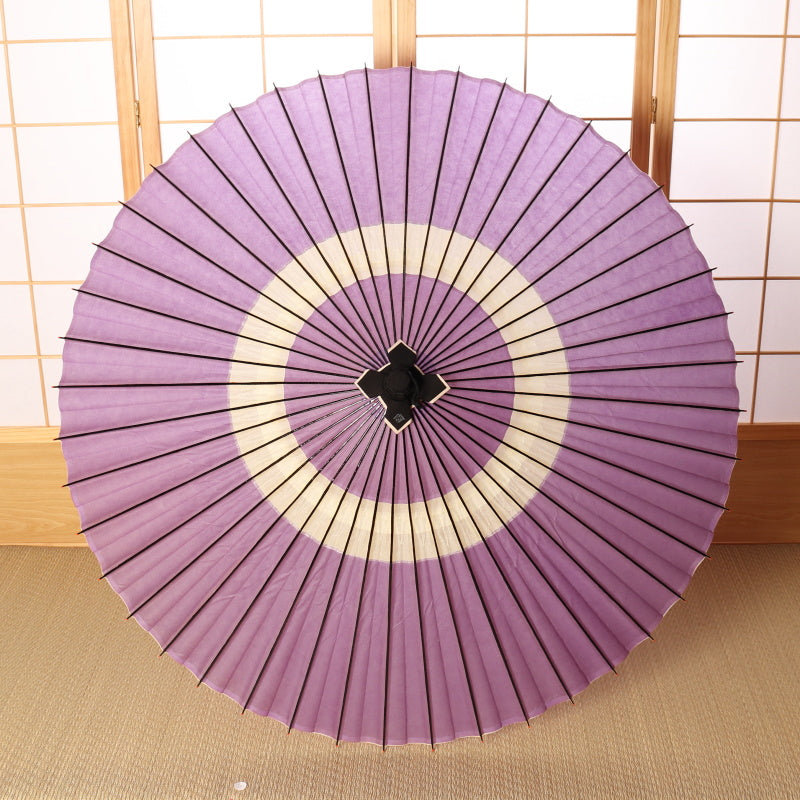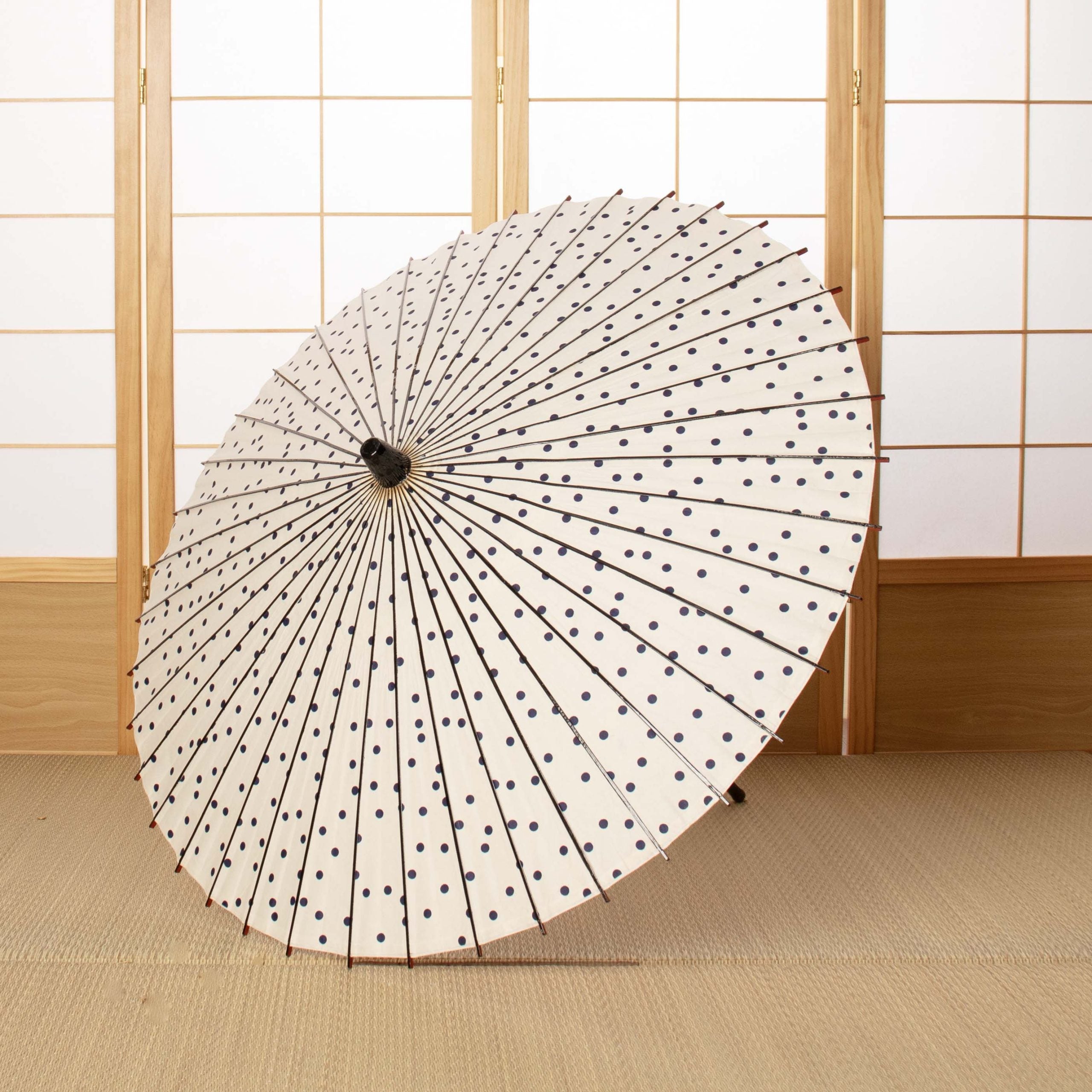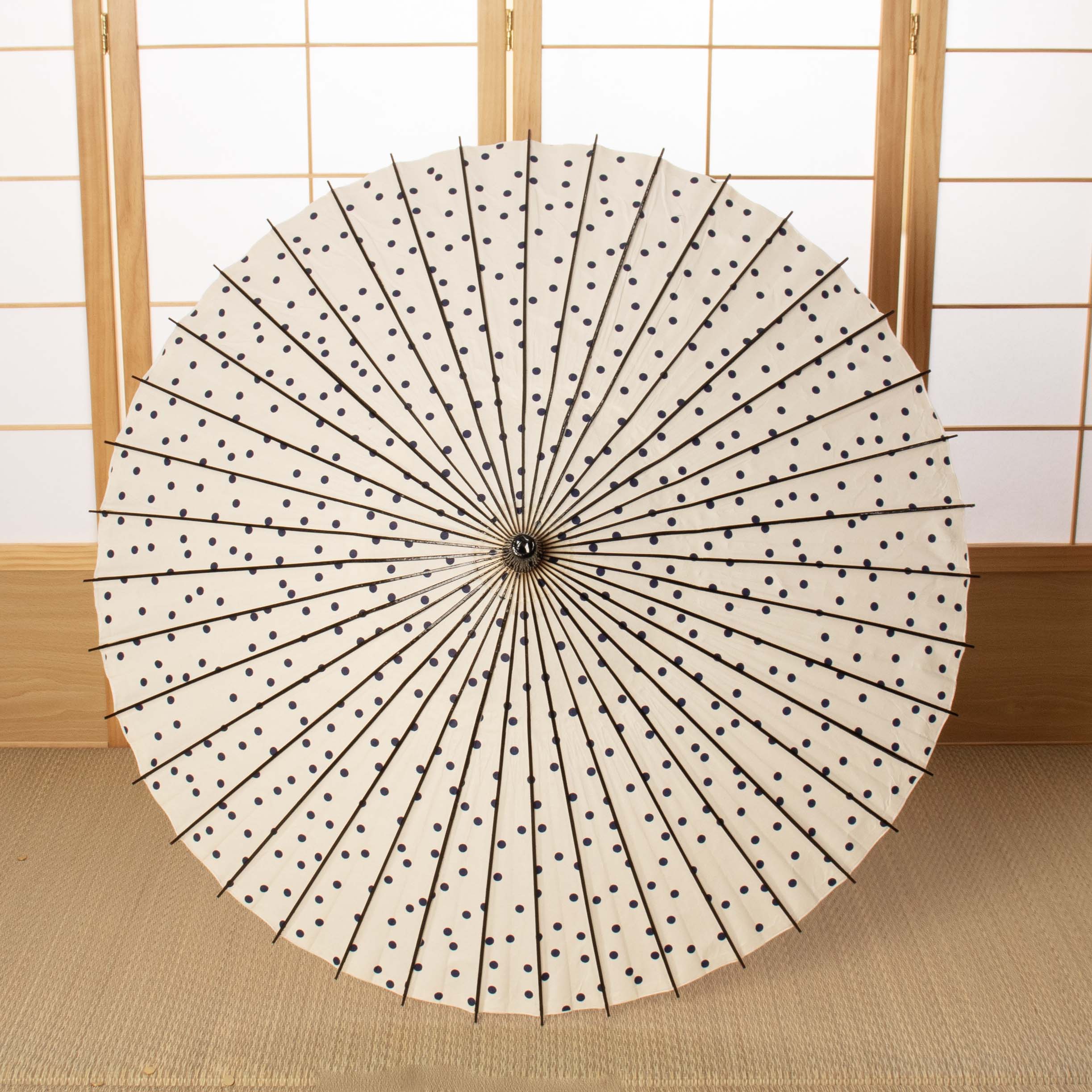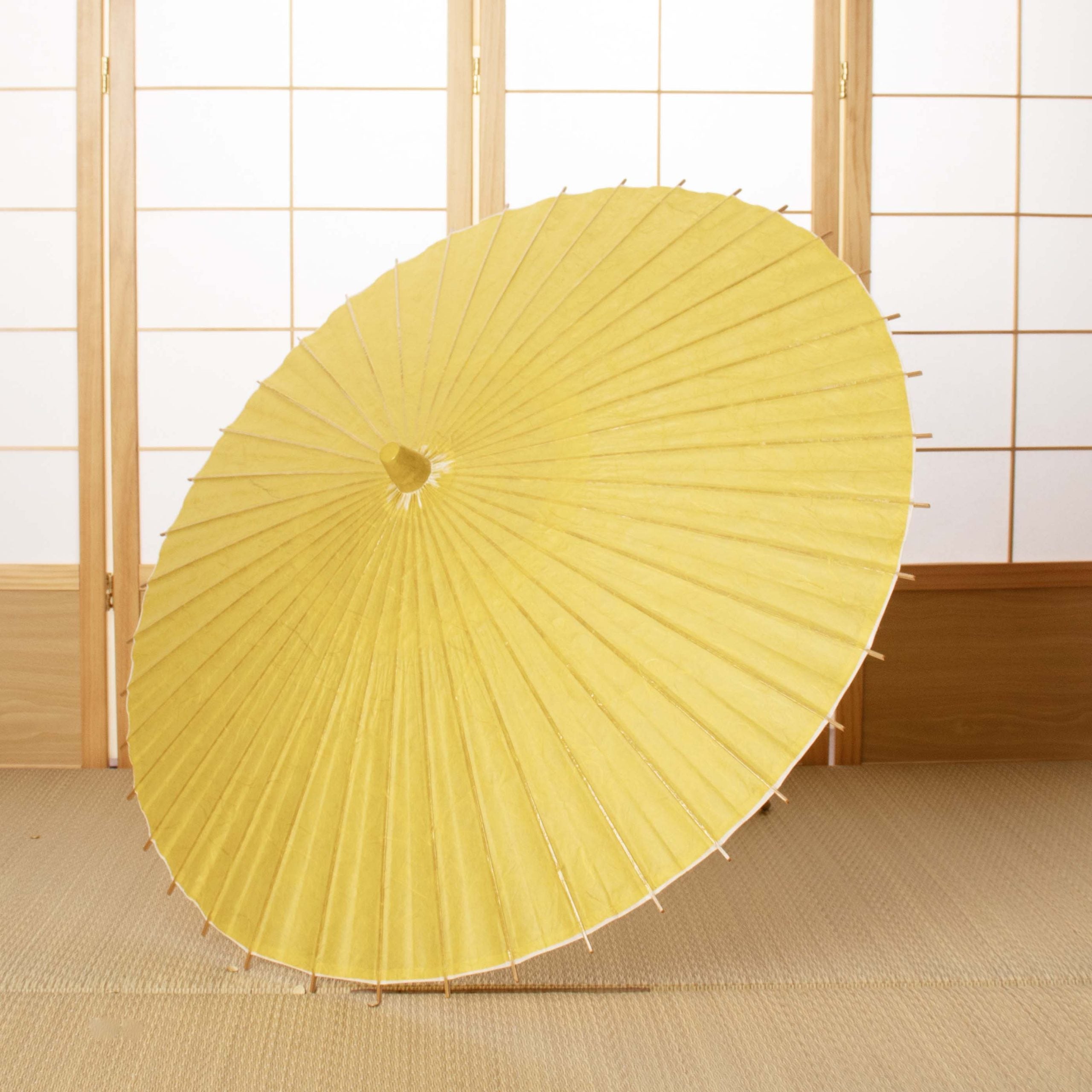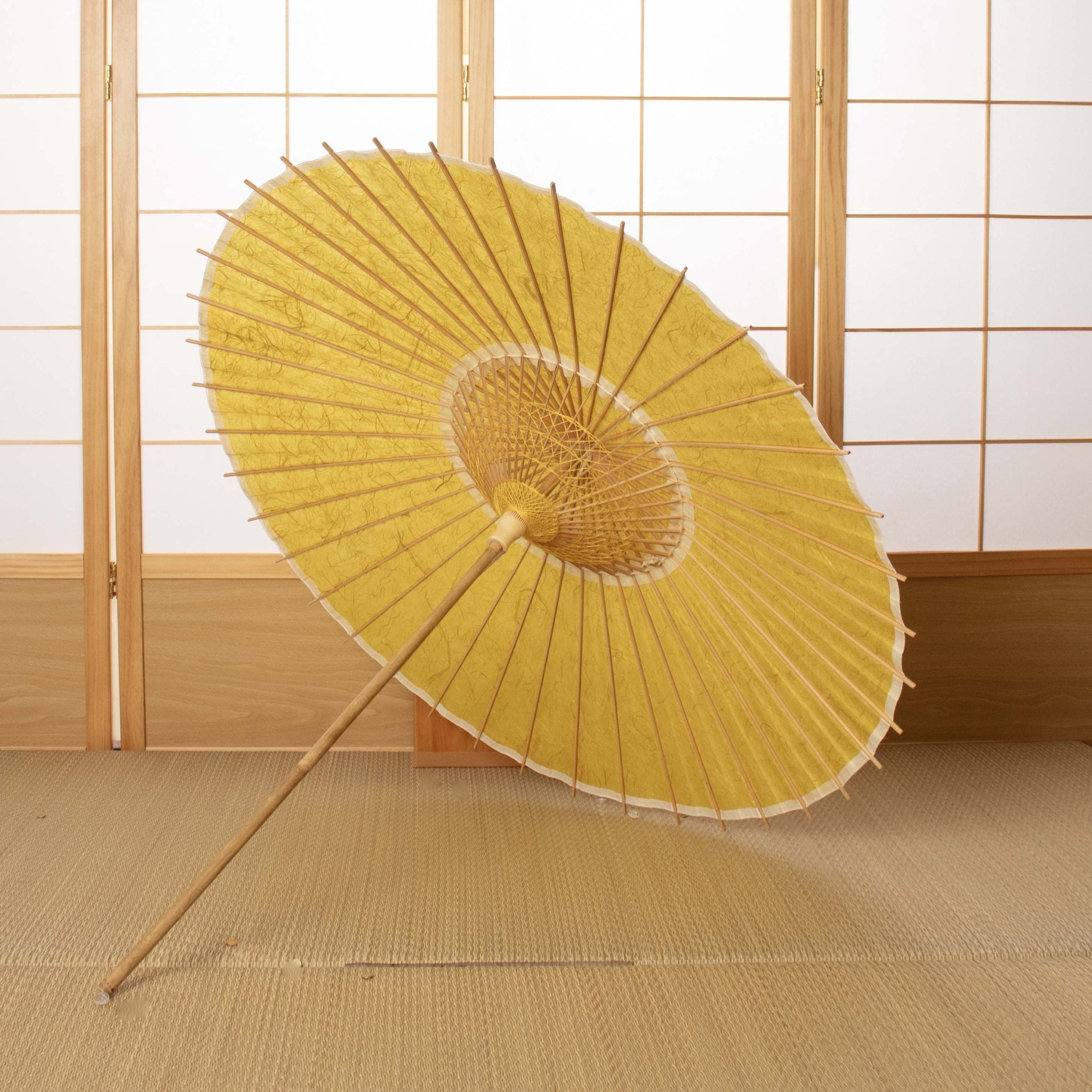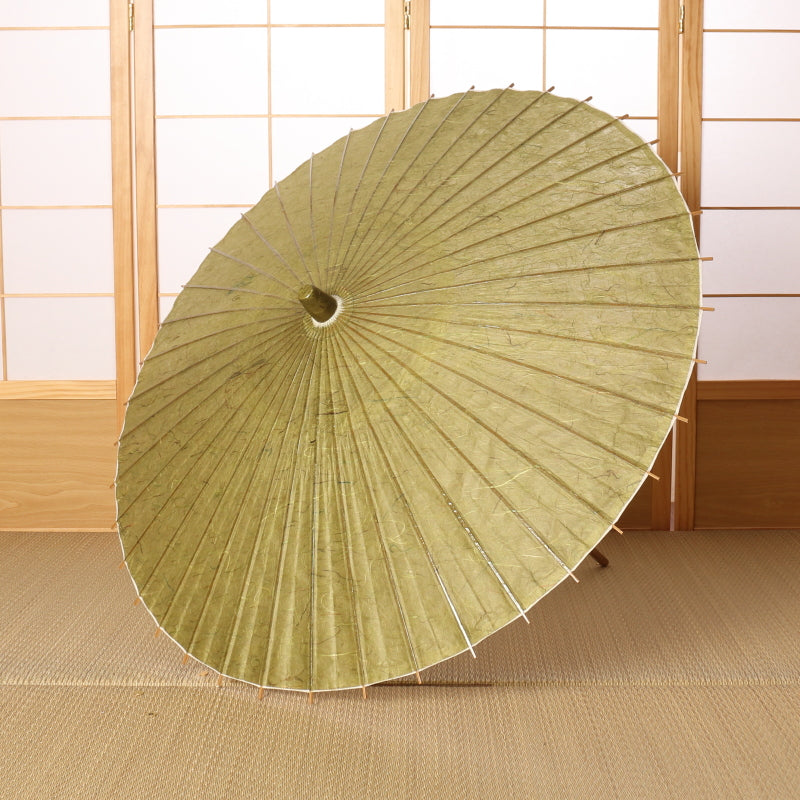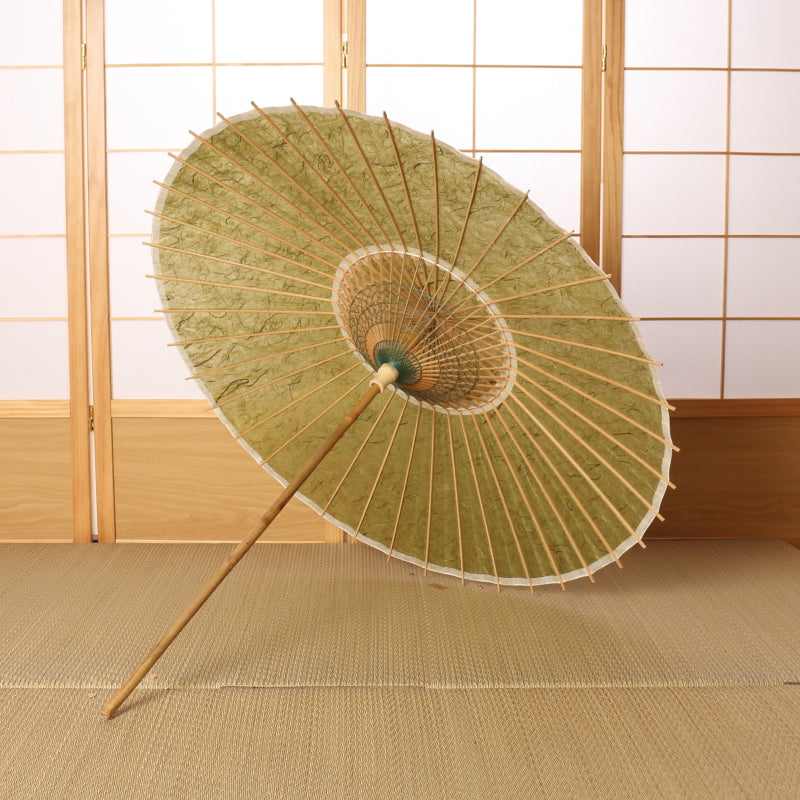-Ancient Japanese umbrella-
The differences between Japanese umbrellas, Janome umbrellas, and Bangasa umbrellas
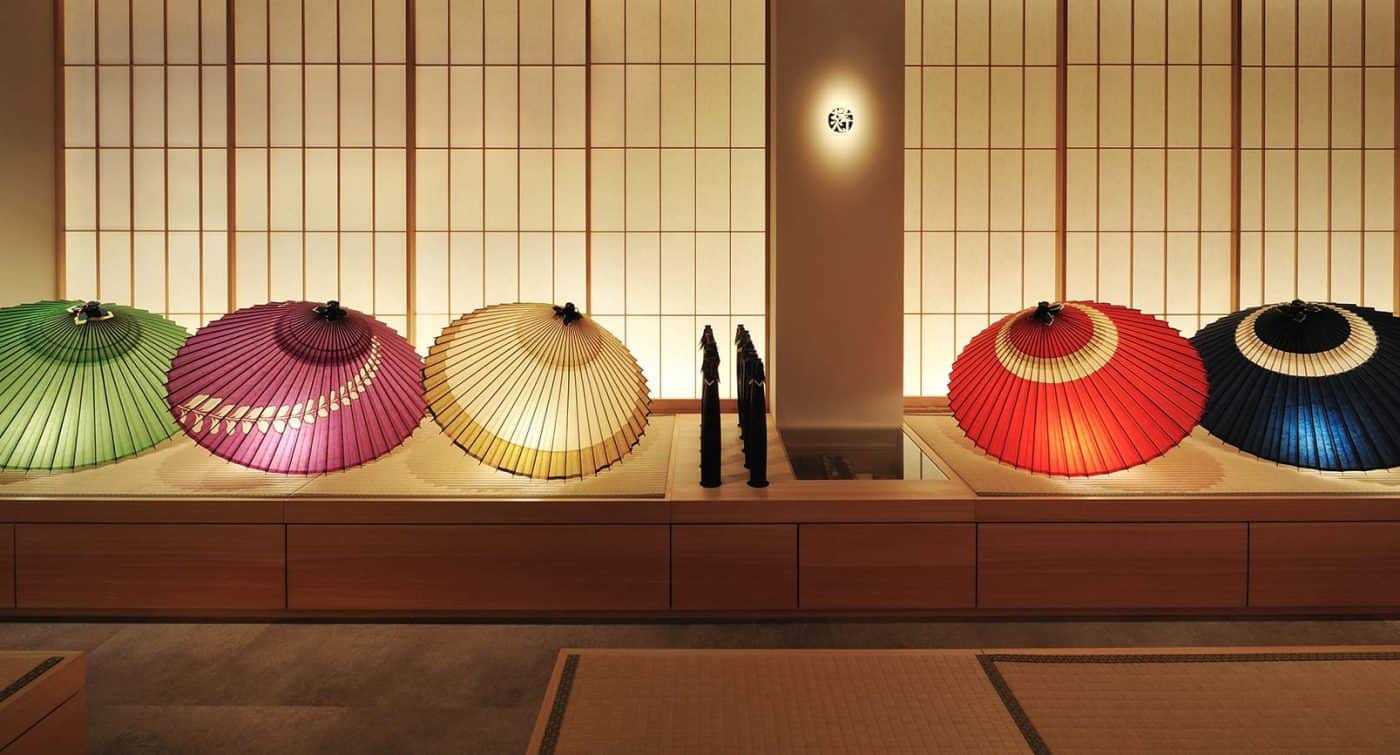
What is a Japanese umbrella?
A Japanese umbrella is a general term for umbrellas made with a frame made of natural materials such as bamboo, wood, and thread, covered with Japanese paper.
The number of ribs varies depending on the type of umbrella and its purpose - 36, 40, 44, 46, 48, or 54 - but many ribs are needed to tightly fold the washi paper inside the ribs.
An umbrella when open, bamboo when closed. One of the beauties of a Japanese umbrella is that when folded it looks like a single piece of bamboo.
Types of Japanese umbrellas include the bangasa (bamboo umbrella), janomegasa (snake-eye umbrella), sun umbrella, and dancing umbrella.
Umbrellas that are waterproofed by applying vegetable oil to the ribs of washi paper are used as rain umbrellas, and there are two types of rain umbrellas: "bankasa" and "janomegasa."
The history of Japanese umbrellas
Japanese umbrellas were introduced to Japan from China around the 6th century along with Buddhist culture.
Originally, it was a large umbrella that could not be opened or closed, which an attendant would hold behind a person of high status to provide protection from the sun or to ward off evil spirits, and it was also used as a symbol of power.
During the Kamakura period, smaller Japanese umbrellas were developed that could be opened and closed using a horizontal bar.
During the Edo period, hajiki was introduced as a method of fixing Japanese umbrellas, and with the development of potter's wheels and hajiki tools, Japanese umbrellas became able to be opened and closed freely.
Furthermore, feudal lords began encouraging the production of Japanese umbrellas as a local industry, and they began to spread throughout the country.
From the 16th to the 17th century, when Tsujikura was founded (1690), the popularity of "picture parasols" and the production of snake-eye umbrellas began.
Popular Japanese umbrellas
Janome (Slender umbrella)
Higasa (Japanese parasol)
What is a bangasa?
The bangasa was an improvement over the janome umbrella, made to be affordable for the common people. The bangasa umbrella has a handle made of untreated bamboo, making it a simple, slightly thick Japanese umbrella that makes the most of the natural qualities of the bamboo.
There are various theories about the origin of the name "bangasa," but one is that they were used by store staff in merchant households, and larger stores would stamp them with the store name or a number such as "Ne no Jugoban" (child number 15) so they could be lent out in case of sudden rain, and thus they were called bangasa.
Also, in the early 18th century, the Daikokuya store in Osaka began selling "Daikoku bangasa" umbrellas with the seal of Daikokuten on them.
It is said that later, umbrellas with seals or stamps on them became "bangasa" (bad umbrellas).
This umbrella was brought to Edo, where it became extremely popular among the common people due to its durability and low price, spreading throughout the country under the name Daikokuya umbrellas, and when it reached Edo it came to be called bangasa (bamboo umbrellas).
Originally, this was the cheapest type of umbrella, made with thick paper, roughly carved bamboo bones, and coated with perilla oil.
Characteristics of the Bangasa
The characteristics of the umbrella are as follows:
- The frame is thick and sturdy, giving it a heavy feel - The handle is made of thick bamboo - It is made of plain Japanese paper, and the small ribs on the inside are simply made with no decoration.In addition to its simple construction, when the umbrella is opened, the evenly spaced ribs spread out in a radial pattern, further enhancing the beauty of the bamboo.
Tsujikura does not only use the traditional white paper, but also uses colored and patterned washi paper to create umbrellas that incorporate new sensibilities.
The frame is made of bamboo, the core is also made of thick bamboo, and the washi paper is coated with vegetable oil, making this an umbrella that can be used on rainy or snowy days. It is an attractive Japanese umbrella with a simple design without any frills.
Due to their sturdy and robust appearance, they are often used for personalized umbrellas for sumo wrestlers and for Japanese restaurants.
Popular umbrella products
What is a Janome umbrella?
It was built towards the end of the 17th century.
When the umbrella is opened, a thick white circle spreads across a basic color such as navy blue or red, and the pattern resembles the eyes of a snake, hence the name "snake eye umbrella."
From the Kyoho and Genbun eras (1716-1741), lightweight umbrellas with thin handles were popular, and later these came to be called thin umbrellas and were carried at the waist.
Japanese rain umbrellas, which are slender with a thread decoration in the middle of the ribs, have a light black painted bamboo handle, and come in a wide variety of colors and patterns, have come to be called Janome umbrellas.
The snake-eye umbrella became popular after being used as a prop in Kabuki during the Edo period.
It is still used today as a prop for Sukeroku, the main character in "Sukeroku Yuen no Edo Sakura," a popular Kabuki play.
Characteristics of Janome Umbrella
Characteristics of a Janome umbrella: It has a thin frame and a handle made of wood or bamboo.
・The wooden stick handle is wrapped in rattan.
- The inner ribs are decorated with gorgeous decorative threads for a stylish look.
- There is a metal fitting called a "ferrule" under the handle that protects the knife when placed down.
- The umbrella has two stoppers that stop the umbrella when it is opened, so you can narrow the umbrella when walking through a crowd or when the wind is strong.
There are many different theories about the snake's eye pattern, which is an ancient Japanese design, and because it resembles the snake's eyes, which are messengers of the gods, it has also come to have the meaning of warding off evil.
Also, when the umbrella is opened, its wide shape is said to represent the wishes of "protection from hardships that may come your way" and "lifelong happiness under one roof." Because it is considered to be auspicious, it has been used for celebrations and as part of a bride's dowry.
Nowadays, both bangasa and janomegasa are Japanese umbrellas that can be used casually and enjoyably by both men and women, and by those wearing both Japanese and Western clothing.
The frame is made of bamboo, the core is made of wood, and the Japanese umbrella is coated with vegetable oil, making it an umbrella that can be used on rainy or snowy days.
Unlike a bangasa, the inside of the umbrella has decorative thread and the handle is wrapped with wisteria to prevent slipping.
Washi paper comes in a wide variety of colors and patterns, and is not only practical but also makes a great addition to Japanese interior decor.
Popular Janome Umbrellas
What are parasols and dancing umbrellas?
As the name suggests, parasols and dancing umbrellas are slightly smaller umbrellas that are used for dancing on stage or as parasols.
The frame is made of bamboo, and the core rod is made of either wood or bamboo.
Unlike bangasa or janome umbrellas, they are not oiled to make them waterproof, so they cannot be used on rainy days, but you can still enjoy the natural colors of the washi paper and the gorgeous patterns of stencil-dyed and yuzen washi paper.
Although it does not have UV protection like Western umbrellas, the sunlight passes through the Japanese paper and is softened, making it a Japanese parasol that is gentle on the eyes and the soul.
Popular parasols and dancing umbrellas
Higasa (Japanese parasol)
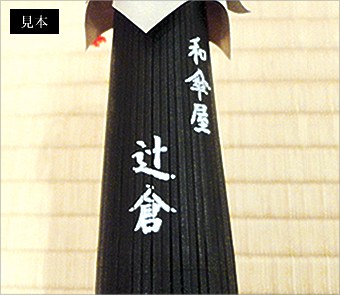
Did you understand the characteristics of each Japanese umbrella?
At our Kyoto store, you can actually see and purchase many Japanese umbrellas.
On rainy days, you can enjoy the soothing sound of rain falling on the washi paper under a Japanese umbrella.
On sunny days, the light shining through the washi paper is gentle and
Why not try spending some time relaxing and feeling enveloped in this atmosphere?
And how about giving a Japanese umbrella as a gift to someone special?



